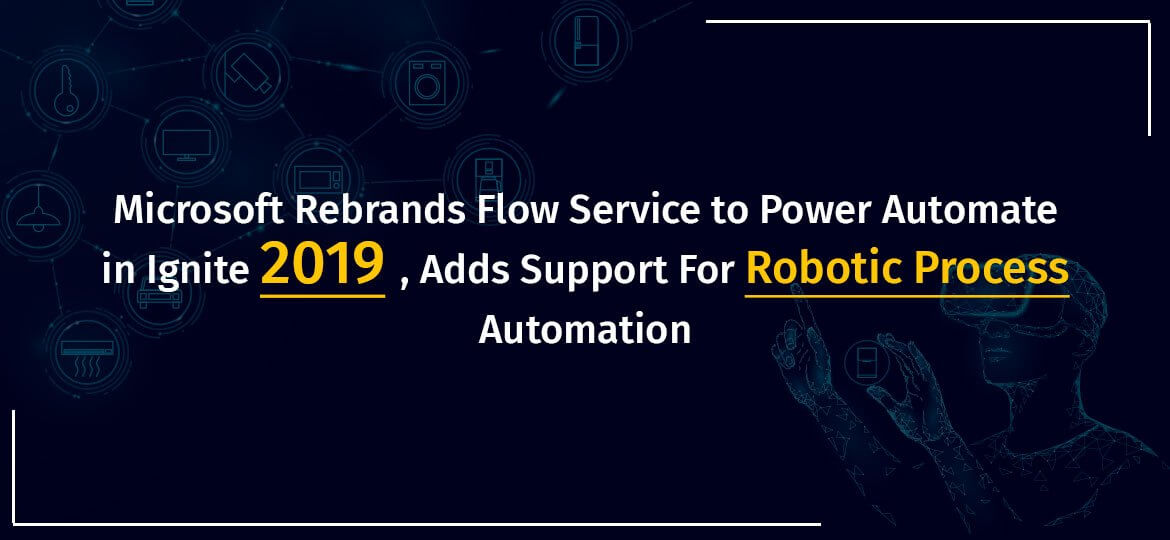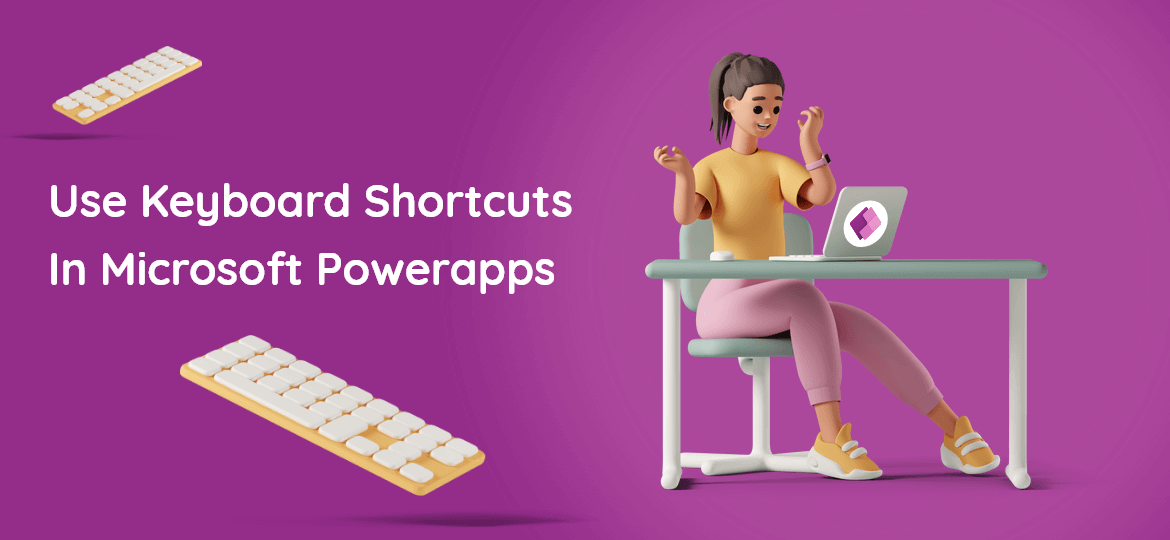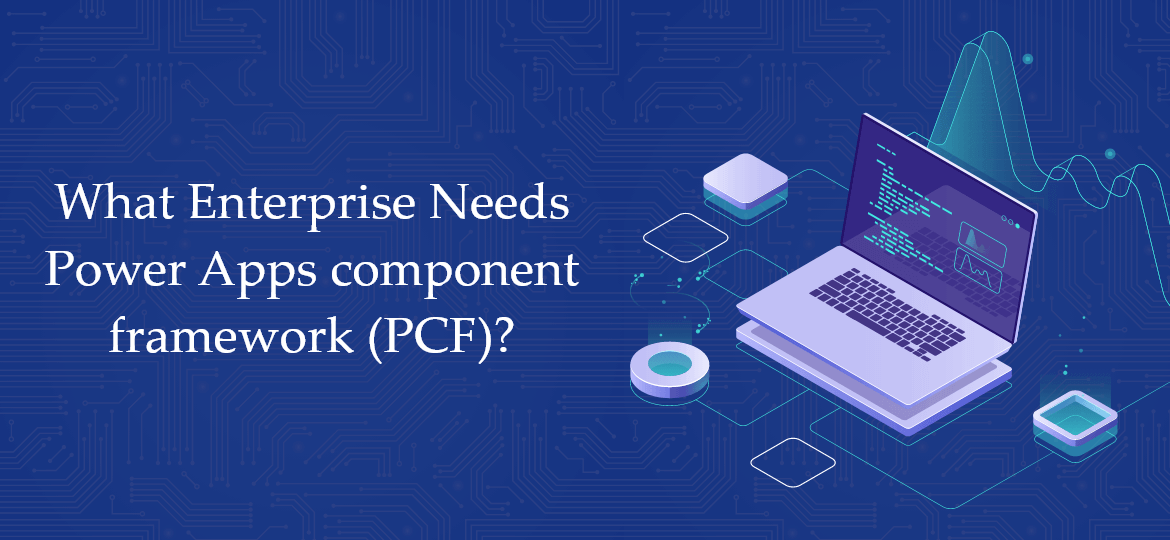
In this digital era, you will find several cloud services or applications to do just about everything. But what’s the actual point, if we can’t couple it together and work?
Disconnected applications and services are much like a cell phone device that has no internet accessibility. In this state, you cannot make any progress. But, Microsoft Power Automate allows your apps, services, and employees to work together seamlessly. If technology and your team are coupled together and started working together, then you can work smarter, work less, and do more.
What is Microsoft Power Automate?
Microsoft Power Automate, formerly known as Microsoft Flow or MS Flow. It is Microsoft Power Platform’s one of the newest services. With Power Automate, you can streamline time-consuming tasks and paperless processes. Automate is a workflow automation engine that focuses on Business Process Management (BPM). It aims to optimize, enhance, and automate your business processes.
Why Did Microsoft Rebrands Flow?
At the Ignite 2019, Microsoft announced the rebranding of Microsoft Rebrands Flow as Power Automate, the latest additions, and features to its Power Platform family. It brings in line with the rest of the platforms.
As a part of Power Platform alongside Power BI and PowerApps, the rebranding aligns with those other services. Moreover, Microsoft is adding support for RPA – Robotic Process Automation. With the integration of RAP, the app can support UI flows and become an end-to-end automation solution. It allows you to do both API-based automation and UI-based automation.
In the case of what Power Automate offers there are a few changes from the overall Microsoft Rebrands Flow experience. With this service, users can create automated workflows across applications. It’s known as an enterprise-oriented IFTTT competitor. Users can gather data collected, file synchronization, and notifications using automated chains.
With the help of AI and bots, RPA automates business processes, repetitive tasks, and freeing up staff to be more productive. You can easily create UI flows in Power Automate, which requires minimal coding knowledge. This means anyone from your organization can be a developer now.
Power Automate vs Flow
Microsoft Rebrands Flow always had limitations such as starting a second flow as a continuation of the primary one, not being capable of reordering the steps in each flow, the complexity of new flow recreation, or reconnecting it to new lists, approved email formation, and so on.
Now, Microsoft has eliminated these limitations and added new features that empower business through its new capabilities – the Power Automate Platform.
Before we proceed further, let us tell you a quick note on rebranding. Microsoft has to rebrand one of its products every quarter or it’s not allowed to call itself Microsoft. Microsoft Flow launched out of preview in October 2016. The competitor, IFTTT was always more about automation than workflows – it just took Microsoft three years to realize it.
Other Features by Microsoft
Power Automate goes RPA (Robotic Process Automation)
Having said earlier, Microsoft revealed a new feature RAP in Power Automate, which is known as UI flows. UI flows are now available in public preview.
The RPA eliminates the manual processes involved in automated workflows that record and playback human-driven interaction with software systems that don’t support API automation. Since Power Automate comes up with pre-built connectors for more than 275 apps and services that do support API automation, Microsoft claims it now has an end-to-end automation platform that can reinvent business processes for workload across industries.
Power Virtual Agents and AI Builder
If the requirement of needing some coding experience for UI flows concerns you, you will be relieved to hear about the Power Virtual Agents. It’s now available in public preview.
Power Virtual Agents allow the different functions in your company such as customer service, sales, marketing, finance, HR, and so on, to create bots with a guided, no-code graphical interface. Think of it as democratizing bot creation. There is no need for any data scientists, developers, coding, or AI expertise. Because Power Virtual Agents are part of the Power Platform. You can easily use the pre-built connectors to allow your bot to communicate with your backend or other systems or call and API.
As a matter of fact, Microsoft has revealed more no-code options in the form of AI Builder on Power Platform. Additionally, the Power Platform also has new prebuilt models in public preview:
- Key Phrase Extraction – analyzes the main talking points from your text.
- Language Detection – analyzes the predominant language from your text.
- Text recognition – extracts embedded printed and handwritten text from images into machine-readable character streams.
- Sentiment Analysis – detects positive, negative, neutral, or mixed sentiment in social media, customer reviews, or any text data.
With AI Builder, organizations can tailor AI scenarios for their specific business.
Security Improvements and Teams Integration
As per the above statement, Power BI is getting more security features with the following new capabilities.
- Able to analyze and secure user activity on sensitive data in real-time with alerts, session monitoring, and risk remediation through Microsoft Cloud App security.
- Allow security administrators who are using data protection reports and security investigation capabilities to leverage Microsoft Cloud App Security to enhance organizational oversight.
Moreover, with Power Platform, Microsoft is trying to collaborate its workplace tools and Microsoft Teams. Now, Power Platform dashboards, app & Power automation are available within Teams. And bots can be accessed through conversations. Additionally, PowerApps developers can also publish their apps directly into their company’s app library within Teams. New Power Automate triggers and actions are now available for common team and personal tasks.
Impact of Power Automate on Your Business
Using Power Automate in your business will surely take it to the next level. It will change the way you interact with your business.
Let’s go through some of the advantages of how your business can benefit from Power Platform.
Enhances Productivity
Your team members can create time-saving workflows for everything while using hundreds of pre-built connectors. This workflow includes individual tasks to scalable systems You can save time, improve your organization, and work more efficiently by automating repetitive tasks.
Streamline Repetitive Tasks
Power Automate notifies you if you receive any high-prioritized email or tweet or message from the receiver. It also sends a template to those you don’t need to review. This ensures that you never miss any single update and stay in touch with your clients while you are engaged in your personal life.
Easy and Quick Data Sharing
By connecting apps and creating flows to copy data from one folder to another, you can easily share files. Even, if you integrate Power Automate with Common Data Services, it will help you store and manage data used by business applications.
How Can You Reap the Benefits?
If you are implementing Power Automate, there are endless possibilities for your business. To reap the benefits, you must create the necessary workflows that keep the track of email attachments, get action items approved quickly, stay on top of relevant emails, and monitor brand-related posts and events on social media.
So, if you are also planning to transform your business with the help of Microsoft Power Platforms such as Power BI, PowerApps, and Flow, then hire PowerApps developers from us. Contact us and will discuss your specific business needs.







 Indonesia
Indonesia
 Botswana
Botswana
 USA
USA
 Italy
Italy
 Panama
Panama




 USA
USA UK
UK Saudi Arabia
Saudi Arabia Norway
Norway India
India Australia
Australia